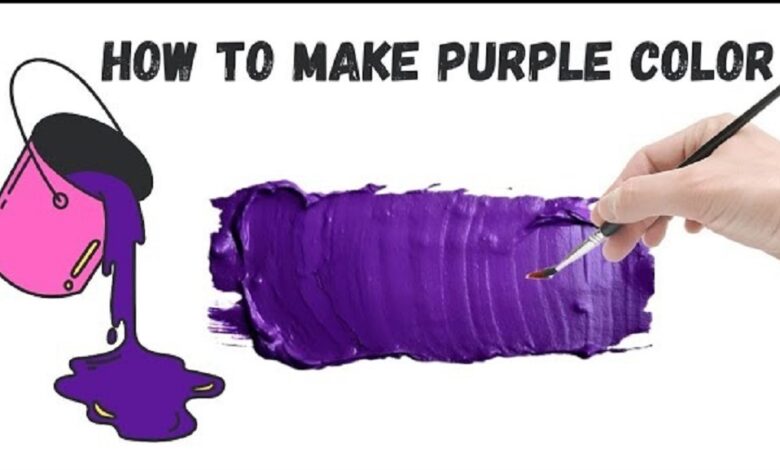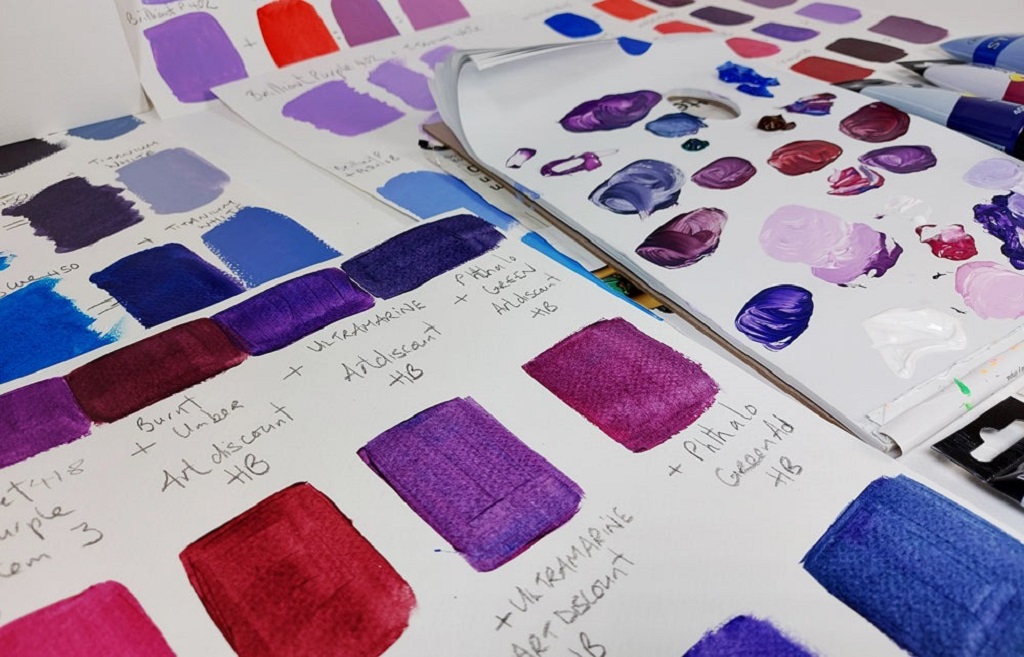How to Make Purple Paint Without Buying It (DIY Color Guide)

Purple is a beautiful, rich color that can add elegance and creativity to your artwork or home projects. However, buying purple paint isn’t always necessary. With some simple ingredients, you can create your own purple paint at home. Whether you’re an artist, a DIY enthusiast, or just someone curious about color mixing, this guide will show you how to make purple paint without buying it. For more color insights, check out the Think Different Network, a great resource that dives deep into color theory and creative ideas.
Learning how to make purple paint can be a fun and rewarding experience. If you want a detailed explanation of the process and the colors involved, you might find this helpful article on how to make purple very informative. It breaks down the basics of color mixing and explains how combining primary colors results in the perfect shade of purple.
What Is Purple and Why Make It Yourself?
Purple is a secondary color created by mixing the primary colors red and blue. It’s often associated with royalty, creativity, and luxury. Instead of purchasing expensive pre-made purple paint, making it yourself can save money and give you control over the exact shade you want.
Making purple paint at home is also a sustainable choice. It reduces waste by reusing materials you might already have, such as basic paints or natural pigments. Plus, experimenting with DIY colors enhances your understanding of color theory and helps you develop your artistic skills.
Materials Needed to Make Purple Paint
To get started, gather the following materials:
- Red paint (acrylic, watercolor, or tempera)
- Blue paint (same type as the red)
- A palette or mixing tray
- A paintbrush or mixing stick
- White paint (optional, for lighter shades)
- Black paint (optional, for darker shades)
- Water (if using water-based paints)
Having quality primary colors (red and blue) will make your purple paint more vibrant and true. If you don’t have paint, you can also use natural alternatives like beet juice for red or blueberry juice for blue, although the results may vary.
Step-by-Step Guide on How to Make Purple Paint
-
Start with Equal Parts Red and Blue
Begin by placing equal amounts of red and blue paint on your palette. Using equal parts will give you a basic purple.
-
Mix Thoroughly
Use your brush or stick to blend the colors well until you see a uniform purple color. The mixing process is crucial to avoid streaks of red or blue.
-
Adjust the Shade
- To lighten the purple, add small amounts of white paint.
- To darken it, add a tiny bit of black paint.
- To make it more vibrant or warm, add more red.
- For a cooler or bluish purple, add more blue.
-
Test Your Color
Paint a small swatch on paper or canvas to see how it looks when dry. Colors can change slightly as they dry.
-
Store the Paint
If you have extra paint, store it in an airtight container to keep it from drying out.
Tips for Making the Best Purple Paint
- Use high-quality paints for richer colors.
- Mix small amounts first to test shades before making larger batches.
- Keep notes of the ratios you use for future reference.
- Avoid mixing too much black as it can dull the purple.
- Experiment with different red and blue shades (e.g., crimson or ultramarine) for unique purples.
Alternative Ways to Make Purple Paint Naturally
If you prefer natural ingredients, you can make purple paint using plants and other materials. For example:
- Beetroot and Blueberry Juice: Mix beet juice (red) and blueberry juice (blue) to create a natural purple dye. Add cornstarch or flour to thicken it into paint.
- Red Cabbage and Hibiscus Flowers: Extract colors from red cabbage leaves (which give a bluish-purple) and hibiscus flowers (red tint) and mix them.
- Food Coloring: Use red and blue food coloring combined with white glue for a simple homemade paint.
Natural paints are safer for kids and eco-friendly but might not be as vibrant or long-lasting as commercial paints.
The Science Behind Purple: Color Theory Basics
Purple is a secondary color formed by mixing two primary colors. This is part of the basic color wheel concept used by artists and designers. The primary colors — red, blue, and yellow — cannot be made by mixing other colors. By combining red and blue, you get purple.
Understanding this color theory can help you mix other colors and shades effectively. For example, mixing purple with yellow (its complementary color) creates brown or gray tones, which are useful in shading and neutral colors.
For more on the science of colors and how they mix, the Think Different Network provides comprehensive resources and creative ideas.
Where to Use Your Homemade Purple Paint
Purple paint can be used in many projects, such as:
- Canvas art and paintings
- Craft projects with kids
- DIY home décor, like painting furniture or walls
- Personalized gifts
- Color experiments and education
Knowing how to make purple paint yourself means you can customize the shade perfectly for any use.
Additional Resources
For further information on color mixing and paint types, you might find the following reputable sources useful:
- The Art Story — An in-depth look at color theory and its application in art.
- Benjamin Moore’s Color Basics — A guide on color fundamentals and paint selection for home projects.
Read More Also: Miami Living Made Easy – Real Estate, Design & Lifestyle
Frequently Asked Questions About Making Purple Paint
Can I make purple paint without blue and red paint?
While red and blue are essential for making true purple, you can experiment with natural dyes or pigments, but results may vary.
How do I make different shades of purple?
Add white to lighten, black to darken, or adjust the ratio of red and blue to get warmer or cooler purples.
Is homemade purple paint as durable as store-bought paint?
DIY paint can be less durable depending on materials used, especially natural paints. Use sealants for longer-lasting results.
Can kids safely make purple paint at home?
Yes, especially if you use non-toxic paints or natural ingredients like food coloring and plant juices.
What if my purple paint looks muddy or dull?
This usually happens if too much black or complementary colors mix. Try adjusting the ratios or starting fresh.
Read More Also: Must Have Tech Accessories for Modern Workspaces
Conclusion
Making purple paint at home is easy and fun. By mixing red and blue paint, you can create a wide range of beautiful purple shades without the need to buy pre-made paint. Whether using commercial paints or natural pigments, you have control over the final color and consistency. Remember to experiment, take notes, and enjoy the process of creating your own purple paint. For more color inspiration and tips, the Think Different Network is a fantastic place to explore.



